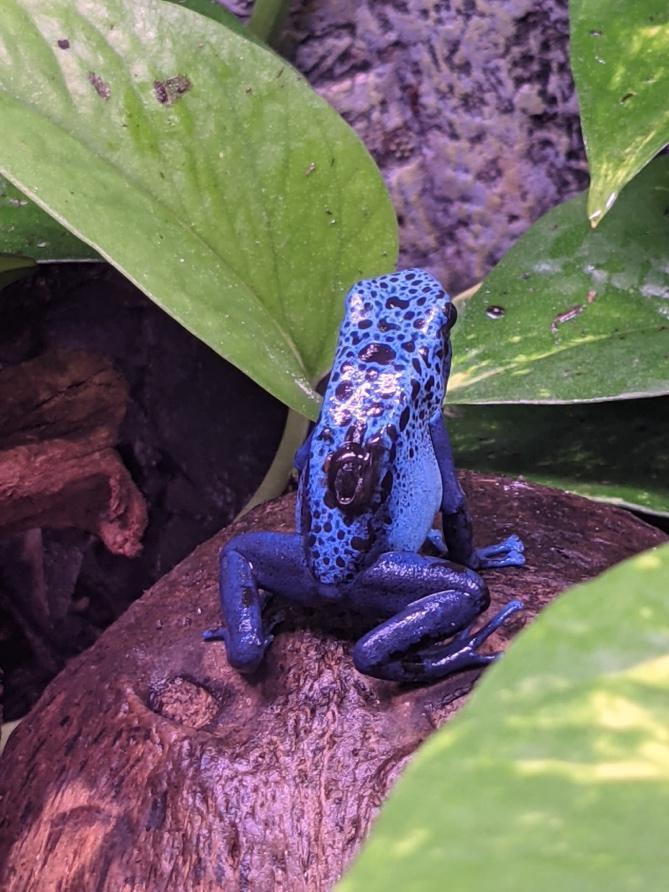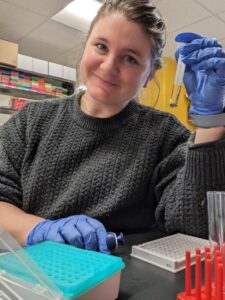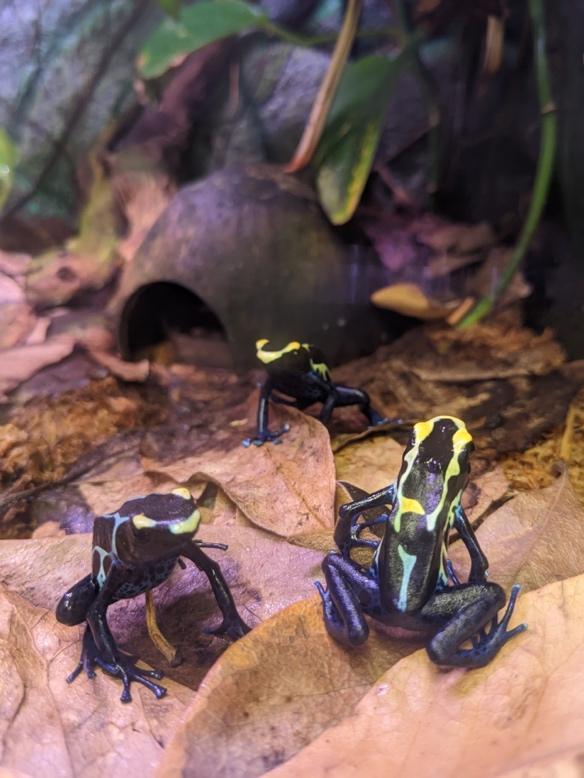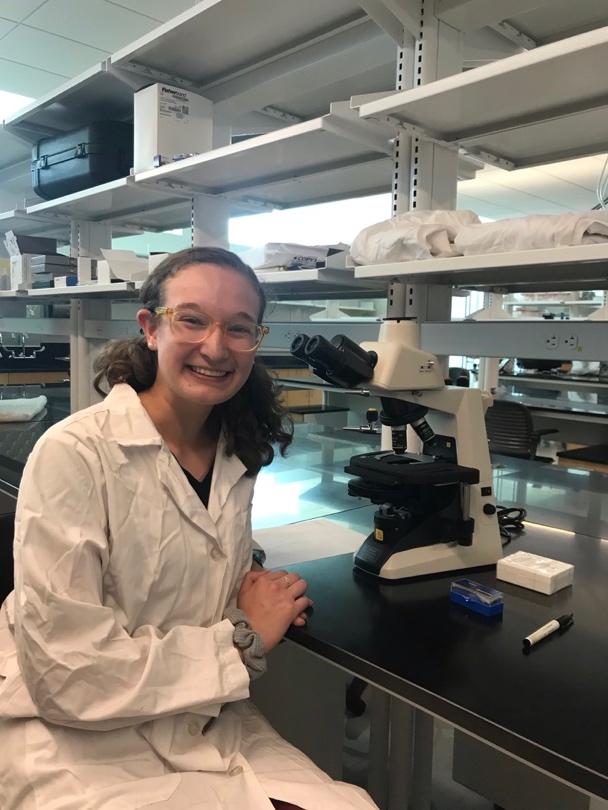
Don’t let these cheerful bright colors fool you – not only is this frog poisonous, but it is also harboring a tiny cannibal on its back. These flashy frogs are not only poisonous as adults, but are even dangerous when freshly hatched from their eggs (dangerous, that is, if you are another tadpole). Tadpoles of the Dyeing Poison Frog (Dendrobates tinctorius) are known to attack and consume other tadpoles of the same species. But what drives these tiny tadpoles to be cannibalistic? Lisa Surber, a third year PhD candidate at the University of Illinois Urbana-Champagne, aims to find out.

To understand what causes these aggressive behaviors, we must first understand what is happening externally in the environment that the tadpoles occupy. In particular, poison frog tadpoles grow in pools with varying tadpole density, which may contribute to their cannibalistic behaviors. When dyeing poison frogs hatch from their eggs, the tadpoles are carried around on the male frog’s back until he finds a desirable water source within which the tadpoles can grow and develop. The tadpoles can be deposited in any number of small pools or puddles, which may or may not already be occupied by other tadpoles. This results in a range of social environments from low density pools, with only one or two tadpoles, to high density pools, with tadpoles from many frog parents. These different social environments provide a unique study system to examine the poison frog tadpoles’ phenotypic plasticity. As Surber shared, “phenotypic plasticity is organisms detecting cues from their environment and altering themselves in response to those cues.” The responses to these cues range from small changes in behavior to larger changes in body shape or developmental rate. In this study system, cannibalistic behavior is considered a phenotypically plastic trait as poison frog tadpoles differ in how often they exhibit aggressive behavior. Her passion for frogs and phenotypic plasticity made this project, in Dr. Eva Fischer’s lab, the perfect fit for Surber.
Surber examined the effects of the social rearing environment on tadpole growth, behavior, and hormone levels. She reared tadpoles for 6 weeks in either the presence or absence of other tadpoles and tracked their growth rates. She collected hormone samples directly from the water to find clues about what may be causing the differences in aggression and growth. She then ran an aggression trial where she recorded how many times the tadpoles showed aggressive behavior toward one another.
Surber found that dyeing poison frog tadpoles respond to different social rearing environments by changing their body size, behavior, and hormone production. Tadpoles reared alone grew to larger sizes and showed a higher rate of cannibalistic behavior than tadpoles reared with other tadpoles. So, why do “friendless” tadpoles appear to be larger and meaner? It seems that these factors may be controlled, in part, by differences in hormone production. Tadpoles that were larger and more cannibalistic produced more of the hormone corticosterone, indicating that this hormone is likely one of the mechanisms controlling the observed changes in the solitary-raised tadpoles. Summarizing her results, Surber said “social environment impacts development and behavior of the organism. In other words, plasticity is awesome.” Although these results may seem surprising at first, it is possible that tadpoles reared alongside other tadpoles are less aggressive toward their tadpole neighbors as there is a greater risk that they will be eaten with a larger number of neighbors – so it may be adaptive to behave more peacefully.

Surber’s results highlight why we need to examine environmental effects on developing organisms. The effect of the environment is an important question with big implications for organisms around the world. Amphibians worldwide are in a major decline due in part to climate change because they match their internal body temperature to the temperature of their external environment and extreme temperatures can be detrimental to their physiology (Amphibian Research and Monitoring Initiative, USGS). As Surber puts it, the bottom line is “frogs aren’t doing well because the environment isn’t doing well.” Surber’s work aims to uncover more about how developing amphibians are affected by their environment by studying plasticity in a species vulnerable to the effects of climate change. As climate change will likely impact amphibian development, dispersal, growth, and behavior (Blaustein et al. 2010), Surber’s findings have important implications for amphibian conservation by furthering our understanding of species’ capacity to adapt to our warming climate.
Learn more about projects in Dr. Eva Fischer’s lab or follow Lisa Surber’s work as she completes her research and prepares to publish her findings.
Author Bio:


